
The construction market offers a wide range of floor finishes, among which self-leveling floors are popular. This coating is striking in its capabilities and has a large number of advantages.
This article describes the features and types of self-leveling floors, as well as options for the interior of your home.






What it is?
Self-leveling floor is a special screed, which is often called self-leveling, since it contains many binders, aggregates and polymer additives, thanks to which all the defects of the rough surface can be eliminated.
In most cases, such mixtures help to finish leveling the base. The thickness of the finished surface is 0.2-2 cm, based on the brand name and product composition.


Cement or gypsum is used as the basis for such a self-leveling floor . When choosing a base, you should start from the parameters of the room in which the floor will be poured, as well as from the purpose of laying it.
Small round limestone is usually used as an aggregate. Manufacturers of different brands offer a composition where limestone of various sizes and shapes is present, which are suitable for certain conditions of using the ready-made solution.
To increase the technical parameters, physical qualities of the material, along with its useful life, plasticizers are present in the composition. They are directly entrusted with all the advantages of a self-leveling floor, its resistance to wear, mechanical damage and drying speed.


Features:
This flooring made a splash in the building materials market. To understand the issue of purchasing a self-leveling floor, you should familiarize yourself in detail with the features of the material, discuss its advantages, device and negative features of the coating.
Liquid floors can vary in their purpose. Therefore, they can act as:
- screed bases;
- self-leveling layer on the screed;
- finishing layer.



Creating a screed base, which will be required for the further installation of various decorative floor surfaces, manufacturers use a special type of mixture. The qualities of the components of such solutions include fluidity, due to which a flat surface is achieved.
A mixture for self-leveling floors can be prepared manually or using a mechanical method.
When choosing components for the mixture, pay attention to the desired thickness of the future layer, as well as the residual moisture of the surface. During the preparation process, you will need water, due to which the required consistency of the solution will be achieved.
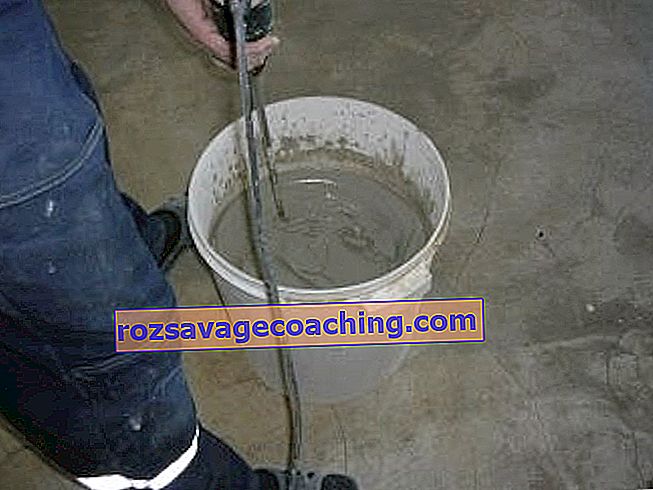

There are mixtures without water in which anhydrides are present. These include the gypsum screed, which is formed with calcium sulfate. Many Russian and foreign trade brands offer similar products. The components of this product include:
- defoamers;
- superplasticizers.


Due to the defoamer, air bubbles cannot appear, which guarantees the necessary strength for the self-leveling floor. Thanks to superplasticizers, the amount of water and the fluidity of the solution are reduced.
Such a screed has some advantages over a cement-sand mortar:
- forms a perfectly even layer;
- the mixture sets quickly;
- the floor retains heat well;
- the screed has a slight degree of shrinkage.

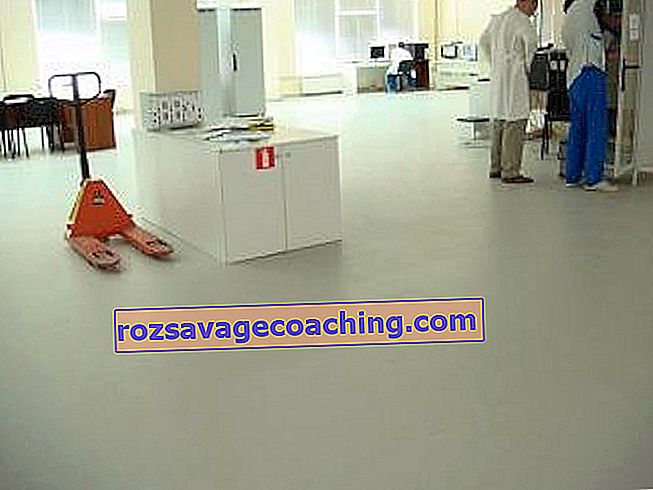
The anhydrite grout will release a significant amount of moisture for a couple of weeks after installation. After a couple of days, you will be able to safely move on such a surface. Due to the small degree of shrinkage, cracks do not appear on the surface.
Such a floor has good characteristics in terms of keeping warm, which allows you to create the desired microclimate in the room and save on heating.
Anhydrite mixtures are not suitable for pouring in the bathroom, since all the qualities of the screed are lost after contact with water. It should also be borne in mind that after setting, a patina forms on the floor surface. It is a glossy layer. For this reason, experts recommend removing patina by sanding before installation.


Self-leveling floor has many advantages:
- such a floor is famous for its versatility, since it is acceptable for premises for any purpose;
- has antistatic properties. This suggests that dust practically does not settle on such a surface;
- resistance to chemical attack;
- thanks to the seamless surface, dirt will not accumulate on such floors;
- easy care of a monolithic surface due to the fact that it does not absorb moisture;
- the materials used in the mixture are non-toxic and do not affect the humidity level in the room;
- self-leveling floors can be combined with the "warm floor" system;
- long service life. With proper care, the self-leveling floor can last 20-25 years without any complaints.




Despite the weighty list of positive qualities, the coating still has disadvantages:
- it is impossible to remove an incorrectly poured base on your own;
- the pouring process is accompanied by numerous difficulties;
- if you have violated the application technology, some areas of the self-leveling floor may swell.


Type and characteristics
The self-leveling floor has excellent technical characteristics, so there are practically no analogues for it. To make your choice, you should know how the different species differ from each other.
The self-leveling floor can be divided into several categories, which will differ in their composition, the room used (some types of coverage are suitable for a living room, can be poured for a warm electric floor on a balcony or in a toilet, other coatings are suitable for a warehouse or garage).


When dividing by purpose, the self-leveling floor mixture can be divided into three categories:
- for rough alignment . It will be relevant in rooms where horizontal drops of up to 11 mm are observed. You can use the material as a base layer for further installation of floor tiles, laminate coverings, parquet;
- mixture for a thin leveling, or a finishing layer . The thickness of such a coating is 5 mm. The raw material must be applied already on the treated surface with preliminary preparation, since it is intended only to eliminate minor defects in the coating. Most formulations contain a binder in the form of cement, which allows, after drying, to install any floor coverings;
- for difficult bases . Such mixtures are a modifying composition with reinforcing fibers and plasticizers. The material is used when leveling wood bases, which are characterized by a structure of several layers.



Material
Self-leveling floor mixes differ in their composition. Each type of mixture has its own qualities that distinguish it from other varieties. Depending on the purpose and conditions of use, you need to choose the material of the self-leveling floor.
High penetration impregnation
This option is considered the most economical. A similar technique is used by people who need to make weak and fine-pored bases stronger. After work, you will get a self-leveling layer that has a damp effect. The impregnation is responsible for the binding of small concrete particles, does not allow it to wash out, and prevents the appearance of dust. This method is often referred to as "dust-free concrete".

If epoxy is used, impregnation up to 2 mm deep is allowed. When using polyurethane compounds, a deeper effect is observed, which reaches 5 mm.
Epoxy and polyurethane floors
It should be applied in one or two coats. Epoxy flooring is usually applied in one coat. This method belongs to the category of practical, since by choosing a smaller layer thickness, you can save on materials. The consumption of raw materials per layer is about 300-600 grams per square meter . After pouring, you will receive a self-leveling floor, resistant to wear, with a semi-gloss effect.



Both types of floor have similar technical parameters in terms of durability, but polyurethane flooring boasts a higher level of wear. This quality is achieved due to its high elasticity. They ensure the safety of 3D floors in buildings where temperature drops are observed, withstand long-term vibration contacts, as well as strong mechanical stress .
Polyurethane self-leveling floors practically do not react to contact with organic acids and other chemically active components. Because of this, they are often poured in rooms that are associated with the food and chemical industries. The floor covering will not deteriorate from contact with oil, automobile fuel and fuels and lubricants .
Epoxy compounds are cheaper than polyurethane. The strong qualities of epoxy include the absence of odors when pouring, since there are no solvents in the composition of the solution.
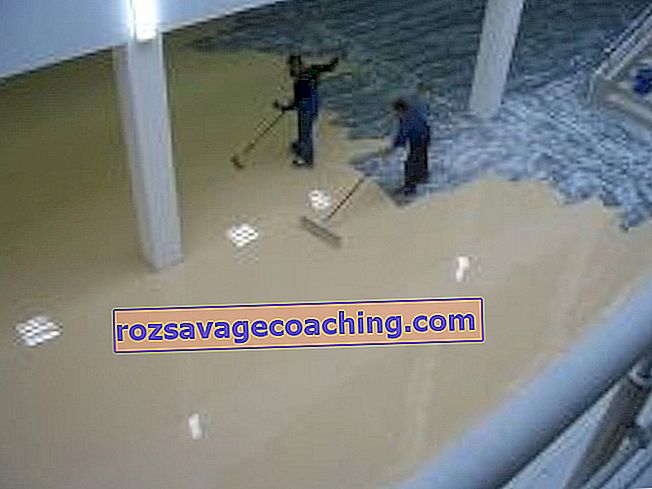


Polyurethane flooring is one-component, while epoxy is a two-component resin and a hardener. Before use, it is necessary to connect them together, which can create additional inconveniences.
The disadvantages of the mixture include:
- strict adherence to the instructions for mixing the composition. It is necessary to carefully observe the proportions and mix the mixture well;
- limited time of use of the ready-made mixture. The filling should be done within one hour. Before mixing the solution, it is recommended to check the exact time.


Epoxy urethane floors
Formed by combining epoxy compounds, which have strength and wear resistance, as well as polyurethane compounds, which are famous for their durability and elasticity. The result is a unique blend that has absorbed the best qualities of these components.
The advantages include:
- the epoxy-urethane floor is moisture resistant, it does not allow water to pass at all, so it can be poured in places where there is a high level of humidity;
- preventing the formation of dust;
- increased level of tensile strength, wear resistance;
- resistance to mechanical, vibration and electrical influences;
- the texture of the floor provides easy maintenance, allows the use of strong detergents and washing machines;
- liquid floor is immune to acids, alkalis, corrosive gases and oil products.


The disadvantages include:
- thorough preparation of the base before pouring;
- if you do not follow the technology of mixing and pouring, the floor may delaminate;
- removing flooring requires special skills;
- difficulties in choosing a color scheme that fits the base coat;
- high cost of goods.


Polymer cement filler floors
They are considered the hardest and most wear-resistant mixture that is used for leveling the surface. The material received all its qualities due to unique polymer additives and cement mineral mixture.
It contains:
- polymers in the form of synthetic rubber, resin and acrylic. They make up 5-20% of the total volume and affect the strength and elasticity of the surface;
- cement is responsible for the strength indicator;
- sand increases anti-slip properties;
- color pigments.


Polymer cement floors are not suitable for pouring in living rooms. This coating was designed to increase the strength of various industrial areas, large parking lots and airfield strips.
The high level of strength enables the coating to withstand the most severe mechanical loads, contact with chemical and oil environments. This indicator indicates a long service life of the floor. If decorative imperfections appear on the surface, they can be easily eliminated by dismantling.

The mixture can be laid on wet concrete or on a fresh screed. The floor itself is often used instead of a screed base because the mortar can be applied in a thick layer. For pouring the material, you do not need to carefully prepare the base.
The formed coating is characterized by antistatic properties, which will be optimal for industries with a large number of equipment. It is rather difficult to stain the surface, which reduces the number of wet cleaning.
The mixture is poured without difficulty, it is ensured by the plasticity of the finished solution. It quickly settles on the surface and fills in all defects, aligning itself . The process of arranging such a floor is not accompanied by chemical aromas, since only natural substances are present in the composition.



Quartz floor
It is considered multi-layered. It is distinguished by its economy, which is provided by an intermediate layer with quartz, dolomite and marble sand. After the first layer is poured, you must immediately apply sand and wait a day. In the future, the surplus is removed. After a day, you can cover the floor surface with a second layer, adjusting its thickness to the desired effect.
The thickness will depend on what you want:
- glossy floor . To give this effect you will need to increase the layer thickness. Experts recommend using an additional fill of polyurethane varnish;
- preservation of anti-slip characteristics . For this purpose, only impregnation is required, and the surface itself is left rough.


Decorative bulk floor
This is one of the varieties of flooring, which is chosen for rooms where there is increased traffic, along with certain conditions for the aesthetic component. Such premises include halls of hotel complexes, shopping centers, halls of cultural and entertainment institutions. The technology for creating a decorative self-leveling floor is similar to a conventional fill:
- on a perfectly flat finished surface, a primer or polymer impregnation is poured. The requirements for the moisture content of the base should be observed, since this indicator should not exceed 4%;
- then you can create decor, during which volumetric drawings are glued, the pattern and small 3D objects are laid out;
- this decorative layer must be filled with a transparent polymer;
- to increase the strength factor, self-leveling floors are covered with polyurethane varnish. When carrying out work, it should be borne in mind that until the polymerization is completed, the solution will release toxic substances that negatively affect human health. For this reason, it is recommended to take precautions and wear a mask;
- after the completion of the work, the room is thoroughly ventilated. A specific smell can persist for a week



Self-leveling floor with 3D effect
This is a separate caste of floors, since they boast all the advantages of a self-leveling surface, as well as a unique decorative appearance. Volumetric floors can be performed not only on epoxy surfaces, cement-acrylic floors, methyl acrylate are suitable for them.
Only for this type of flooring, one finishing layer is poured, the minimum thickness of which is 2 mm. These are the most expensive polymer floors that create a unique decorative effect.
The finishing work includes a layer with non-woven materials on which the drawing is located. The picture must be of high quality. When choosing such a floor, remember that the volumetric effect will only be noticeable from a certain position . Therefore, it is worthwhile to design the viewing point in advance and choose the image deliberately.


In a polymer bulk field with fillers, photographs, coins, sand, beads, mineral types of crumbs and even small pebbles can act as bulk fillers.
Many designers recommend using cut pieces of acrylic paint. Such a quick-hardening floor has not only an attractive appearance, but also good technical characteristics.



Acrylic floor
Manufacturing takes place using high quality cement, special fillers, polyacrylate copolymers. Initially, such a floor was used for filling industrial premises, but at the moment its scope of operation has expanded. The mixture is characterized by increased strength , which allows it to be poured in places with maximum chemical and mechanical stress.
Acrylic flooring is actively used in places with high humidity. For its arrangement, laying of waterproofing is not required, since the coating itself straightens out excess water without absorbing it into itself. Also, the mixture has anti-slip properties, which expands the scope of its application.
Many experts advise using this composition as a leveling surface for other floor coverings. For example, it is poured as a base under a laminate or ceramic tile.


Positive qualities of acrylic floor:
- it can be used to obtain a matte or glossy surface;
- resistance to temperature changes;
- raw materials cannot be detached from the base;
- long service life, which is 30 years;
- Smooth surface;
- elasticity;
- a wide range of design solutions;


- easy installation;
- use of environmentally friendly materials;
- moisture resistance;
- easy care;
- wear resistance;
- record time of polymerization.

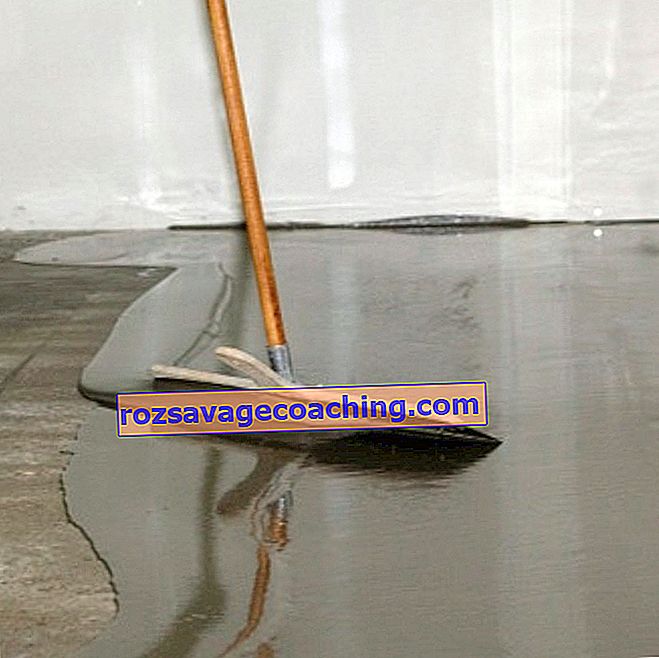
There are also disadvantages to the acrylic surface. The filling is accompanied by an unpleasant odor, which makes it difficult to work. However, when it dries, the unpleasant odor disappears.
Before buying, consider the fact that the solution was developed for work on a large area, so filling it in the bathroom will be accompanied by additional difficulties. The high cost of the material is also among the disadvantages of a self-leveling coating.

Methyl methacrylate liquid floors
They are a coating that contains two semi-synthetic components. This mixture dries quickly. The composition contains a dry filler mixture, which is sold in 15 kg bags, and a liquid hardener in plastic cans with a capacity of 2 liters. The floor cures quickly, so you can walk on it after a couple of hours . The floor can be poured on any base: concrete, floor slabs and even on a surface with expanded clay.
Such a coating can be poured even at sub-zero temperatures , which does not affect the performance of the floor. The disadvantages include its toxicity, so work should be done with a mask and in a well-ventilated area.
When polymerizing the layer, no toxic substances are formed, so it can be stacked in grocery stores or in a warehouse. The material is resistant to chemicals, does not conduct electricity and does not allow moisture to pass through.


Gypsum self-leveling coatings
Used for leveling foundations inside rooms. The layer thickness is 20-30 mm. The mixture contains a gypsum base and cement. The ready-made mixture can only be used in rooms where humidity and temperature are controlled. Craftsmen use such a solution only for leveling rough foundations, on which there are significant drops and cracks.


Advantages of gypsum mix:
- self-leveling layer . You are required to pour the solution onto the base and roll it out with a special roller;
- fast polymerization . The solution dries up within 24 hours, which significantly reduces the repair time;
- the structure of the mixture allows pouring manually or using mechanized methods;
- environmental quality of materials . Plaster screeds can be used in healthcare facilities.


Rubber liquid floors
The construction industry is constantly evolving, offering its audience innovative developments. These floors are among the innovations, they managed to gain respect in the market due to their technical characteristics.
Advantages of a rubber filling surface:
- good shock absorption;
- the elasticity of the mixture;
- the material is elastic and has a high level of resistance to mechanical stress;
- the surface of the floor is soft, so the likelihood of injury decreases;
- anti-slip effect;
- attractive appearance;
- lack of joints;
- wear resistance;
- fire resistance.


Manufacturers of liquid rubber coatings offer formulations that differ in physical properties due to differences in modifying additives. By adding or decreasing the number of components, you can focus on certain layer characteristics.
A self-leveling rubber floor can be used in a rather limited specialization, since its soft and elastic surface is not suitable for every room. Such a floor is widely demanded when filling children's playgrounds and gyms . Since rubber is resistant to water and dust, this material can be poured in both indoor and outdoor areas.
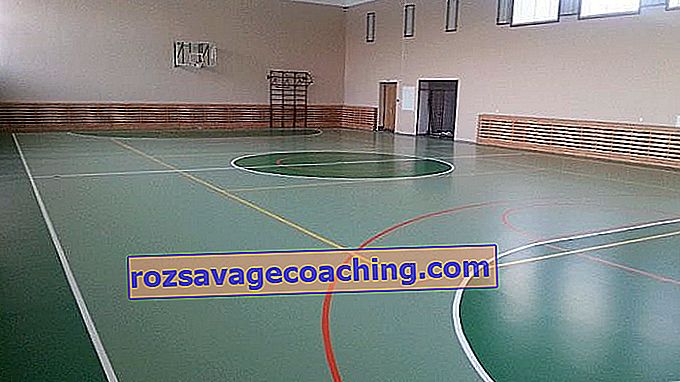
For playgrounds, you can use a thick layer of fill to soften the impact of a fall. The soft structure of the raw material does not allow damage. A thin layer is used for sports fields. Also, this coating is found on underground parking lots, stairways and steps.
The rubber compound can be painted in any color, therefore, playing fields on sports grounds are often painted with it. Due to the porosity of the mixture, the paint lasts for a long time.


Thickness
The thickness of the layer is not randomly selected and should be determined based on a whole list of conditions that must be observed before pouring. If you make a very thin layer of a liquid floor in a room where there is a high dynamic load, the surface will quickly deteriorate.


There are three criteria that affect the layer thickness:
- the level of mechanical stress. Before pouring the floor, you will need to calculate such indicators as the level of vibration exposure, surface resistance to wear and the likelihood of hitting the floor covering;
- laying the thinnest layer corresponding to the variety of binding components of the mixture;
- the level that is required to level the roughing.
If you fill a floor that is not thick enough, it will not last long. It is not necessary to carry out the laying of a thicker layer, as you will spend money on excess raw materials.


To resolve the issue related to the minimum floor thickness, it is recommended that you familiarize yourself with the types of mixtures that meet these criteria:
- thin layer solution . The thickness of such a layer should not be more than 5 mm. The coating is able to protect the base from adverse environmental influences. The solution consumption depends on the quality of the selected screed and the type of dry mixture;
- self-leveling . The maximum thickness of such a layer will be 20 mm. Such a floor covering is characterized by antistatic qualities and resistance to mechanical stress;
- highly filled surfaces . The minimum layer thickness is 2 cm. Mixtures are made from special fillers, including expanded clay, magnesite and quartz sand. They are often used in places where a thicker layer needs to be obtained that exceeds the maximum value.


The layer thickness depends on the type of raw material used. Masters recommend paying attention to the characteristics of each material, and then making a choice:
- polymer floors . For such a surface, 4 cm is sufficient. The minimum value is 2.5 mm. If you are planning additional coloring of the layer, you can lower this value to 0.3 mm;
- methyl methacrylic . Thin-layer self-leveling floors are usually applied to concrete and steel substrates. Despite the fact that the thickness of one layer does not exceed 0.6 cm, it is able to withstand a load of 15 tons;
- cement-polymer compounds were specially created for repair work on ceramic and wood surfaces. The surface can be up to 5 cm thick. If you plan to fill in rooms with maximum load, the layer thickness of such a floor cannot be less than 10 mm.



When pouring the floor in an apartment, the layer thickness should not exceed 8 mm. This indicator does not include the soil and the base itself.
These parameters are sufficient for the floor covering to be durable and resistant to wear. If you are using a liquid floor as a finishing surface, the layer can be up to 0.2 mm, provided that the base is properly prepared.
The minimum thickness of any liquid floor is 1.5 mm . However, for standard living spaces, a value of 2.5-4 mm should be chosen. With industrial facilities, the situation is different, since floors can reach 10 cm. The mixture should be applied in two layers so that the coating is provided with a sufficient level of strength. If you follow these rules, you will get a floor that will withstand a multi-ton load without deforming the layer.


Colors
On the construction market, there is a wide selection of polymer elements along with coloring pigments, thanks to which you can paint your polyurethane or epoxy floor in different colors. Such a coating can have a monochromatic surface, and also combine several shades.

To get an original color effect, you can purchase different types of dyes and fillers that will not only help decorate your floor, but also improve its structure.
Depending on your preference, you can create a matte white floor or a brightly patterned surface that won't fade after 20 years of use. The high quality of coloring pigments is due to the use of mineral substances that extend the life of the paints.


When choosing the texture and color scheme of the flooring, you should rely on the following parameters:
- style of the room. For classic interiors, it is better to choose soft and calm surfaces, while modern rooms allow the use of contrasting shades;
- your own preferences;
- type of lighting and layout of the room;
- if you opted for bright colors, remember that colorful combinations can cause fatigue.



In addition to choosing a color, designers are ready to suggest using some techniques that will give your room originality. These techniques include:
- decorative chips . They are pieces of paints of different colors, sizes and shapes. They dilute the polymer solution, which makes the future floor look like marble chips or granite. Marble will suit the classic interior, add notes of chic and individuality to it;
- coloring with polymer paints . This method creates an interesting artistic effect, which is achieved by applying paints to the base surface. After painting, the layer is varnished. Drawings are applied using stencils or by hand;


- transparent liquid floor with filling . Many designers resort to this method, which consists in applying a transparent mixture to bulky items. You can use various stones, coins and even shells for these purposes;
- volume 4D . This method is considered the most interesting, as it recreates the full effect of a three-dimensional pattern on the floor. The surface is created using a realistic image, which is located under the transparent polymer mixture.
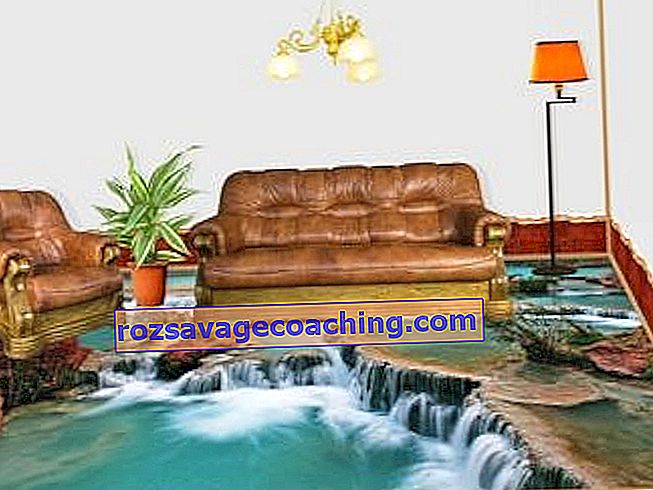

When choosing a self-leveling floor, consider its aesthetic qualities and practicality. For living rooms, you will not need to use a composition with a high level of strength, which will be relevant in industrial premises, and for a floor in a warehouse, you should not pay for a three-dimensional image.


Which one is better to choose?
The choice of a self-leveling floor should be based on the following indicators:
- surface type:
- the degree of load on the floor;
- type of existing foundation;
- required layer thickness;
- the presence of defects on the surface to be leveled;
- climatic properties of the room.


For premises with a high level of traffic, you should choose floors with a high level of strength. Such floor coverings are called industrial. They are also suitable for the arrangement of warehouses, as they can withstand repeated transportation of carts and other heavy items.
If you are considering a liquid floor as a stand-alone coating in your home, pay attention to solutions with a base in the form of epoxy resin and acrylic paints.
The dye-free option is also suitable if it contains a canvas substrate with an image. For other options, you can consider cement or gypsum mortars.



A self-leveling floor with good moisture resistance is suitable for arranging a bathroom. You can purchase a mix for floor tiles or epoxy and polyurethane mortars that do not require a topcoat.
For the kitchen, you can choose polyurethane or epoxy mixtures with acrylic pigments added. With the help of such a solution, a seamless, even surface with the desired color scheme is created. If you plan to further cover the surface with laminate or linoleum, pay attention to cement or gypsum mixtures.
Start from the cost, the required amount of raw materials and the timing of the work.


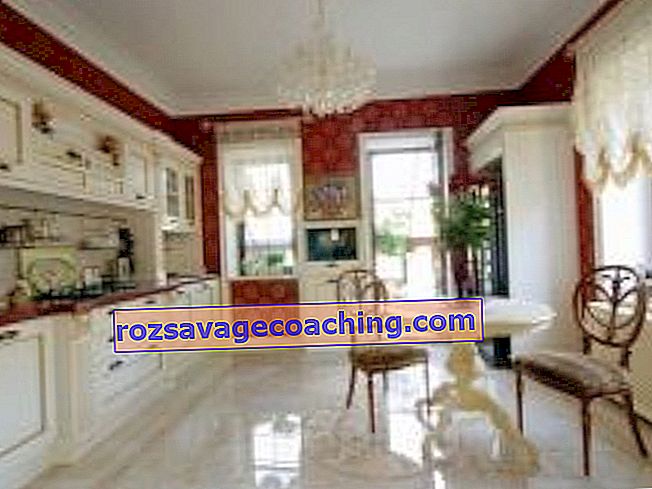
Any polymer composition is suitable for arranging a balcony. The best solution is to choose a matte surface, as it has an anti-slip effect. For loggias and balconies, you can also use cement-based mixtures, but gypsum solutions should be excluded.
For a bath, the same solution will suit you as in the situation with a bathroom, but with increased requirements in terms of technology. Refuse gypsum mixes, even if they will be protected from moisture by tiles. Choose a material based on the base used, as concrete and wood will require different mixes.


Self-leveling floors differ in the type of their intended purpose. Cement mixes are not suitable for topcoats as they act as a conventional cement screed to create a level surface. Such a self-leveling floor differs from a standard screed in its liquid working state, due to which the mixture spreads over the entire floor area, independently creating a perfectly flat surface. Such a liquid floor is used for laminate, carpet or linoleum.
A polyurethane compound can often be found among "liquid linoleum". This is due to the fact that such a coating can boast not only performance characteristics, but also an aesthetic component. Such a floor is often poured in residential premises and in production.


The epoxy floor is absolutely impervious to moisture, so it can be purchased for filling rooms with swimming pools, car washes, chemical and food industries. Since the mixture is safe, it has found its use in living rooms, medical and childcare facilities. However, this floor is fragile and can suffer from contact with a hammer or other heavy object . Therefore, it is not suitable for rooms subject to shock loads.
Methyalkrylate solutions are suitable for industrial premises in which there is an increased load and chemical contacts.


Style and design
Self-leveling floors fit into any interior. However, they are most suitable for filling in modern interiors, which include loft, modern, hi-tech and minimalism styles.

If you like the classic interior design, the floor should match the concept of the room and fully harmonize with the decor. For such an interior, you should choose matte monochromatic shades or fill with imitation of natural stones, wood structure.
For lovers of minimalism and high-tech, seamless floors are considered the best choice. The coating must contain strictly one color. A matte or glossy surface is acceptable, depending on your taste.


For a Scandinavian interior, you should choose uncomplicated floors. White works best for this purpose, but bright contrasting shades can be purchased. Some designers suggest leaving the floor as a rough finish.
In rooms that are made in industrial or loft style, decorative liquid floors must not be poured. Pay attention to the screed without a glossy surface, which will create the necessary atmosphere in the room.

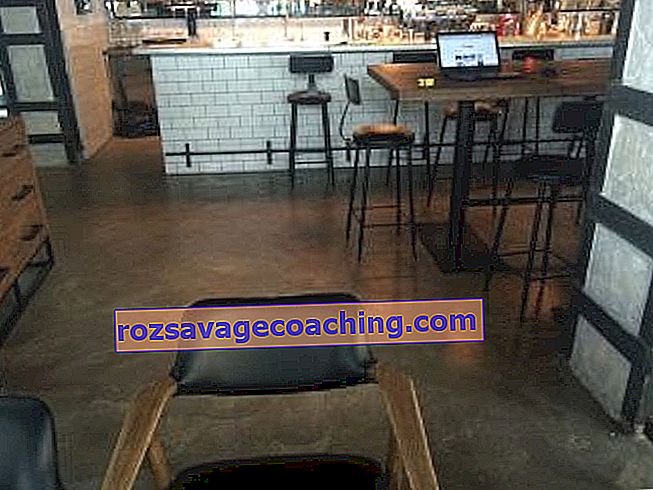
For a modern modern style, a glossy surface is suitable. Be sure to choose solid and neutral shades. A win-win is a matte white surface or gray, woody hues.
Remember that these colors are not practical, but only they can make the room brighter and more spacious. Combined with a bright interior, this flooring creates the right atmosphere.

Important nuances
Arrangement of a self-leveling floor on the shoulder of a home master. When performing this type of work, you should familiarize yourself with the basic rules and nuances, thanks to which you will avoid some mistakes that may create difficulties in the future.

The subtleties that should be studied before pouring a liquid floor:
- before pouring the mixture, you must carefully prepare the base. It must be dry and free from dirt. You will also need to level and degrease the surface;
- for the solution to adhere better to the base, cover the prepared surface with a primer;
- if you carry out such processing, the self-leveling floor will no longer detach from the base. If you need to create a new coverage, you will need to place it on the old layer;
- if the liquid solution is poured onto the rough surface, it will begin to spread independently over the entire area of the room. At the same time, bubbles will begin to form on the surface, which must be smoothed out using a special roller;


- do not pour a liquid floor if there is a draft in the room;
- the temperature in the room being equipped should not be less than 10 degrees;
- equip the door with a stopper. It can be replaced with a regular strip, plasterboard strip or profile, the width of which is 0.5 m. The first strip should be formed along the width of the wall opposite the door;
- breaks in work should not be allowed, therefore the next strip is poured immediately, along with the rest. Remember to level the floor and spread the mixture with a spatula. Bubbles should also be eliminated immediately;
- the finished floor must be covered with polyethylene until polymerization. The drying time for each floor is indicated in the instructions;
- the self-leveling floor also has its own expiration date. It depends on the composition of the mixture. Expired self-leveling floor loses its binding qualities, which affects the entire process as a whole. As a rule, the mixture has a shelf life of six months.


After reviewing these subtleties, you can draw conclusions and create a high-quality floor covering in your home.
For information on how to fill the self-leveling floor, see the next video.
Famous brands and owner reviews
Many brands offer their products to the audience to create self-leveling floors. To make the right choice, you need to familiarize yourself with the most famous brands and study the reviews that customers leave.
- The Osnovit mixture is in great demand among buyers, as it has an important quality - fast polymerization rate. People who have been able to evaluate this mixture report that it dries up after a few hours. This is the fastest solution and hardens quickly, allowing you to walk around your home without restrictions. In small apartments where there is only one room, this option is optimal.
The manufacturer himself reports that the mixture is made on the basis of mineral binders, in which polymer additives are present. The material can be used to furnish rooms with a normal degree of humidity.
Such a liquid floor is able to eliminate visible surface imperfections and is suitable for a warm floor system. These characteristics are confirmed by customer reviews.

- For fans of the German brand, there is a mixture of Bergauf , which has managed to conquer its audience. Buyers choose this material because of its composition, in which cement acts as an astringent component. This substance allows you to use a self-leveling floor for filling not only living rooms, but also a bathroom. According to reviews, the solution fits perfectly on any surface, suitable for a warm floor. Positive comments speak of its versatility. The manufacturer has been able to develop a coating that is suitable for any finish.
- Reviews of another brand, Knauf , speak of its operation on wood and concrete substrates. Buyers report that this is very convenient, since not every manufacturer can provide guarantees for a successful floor casting. This mixture uses Portland cement and gypsum as binders. You can also pour the solution in wet rooms. Many people speak positively about the viability of the layer, due to which it covers large areas at a time. The floor can be used within six hours.


- Bolars solution is purchased by those people who plan to use a self-leveling floor as a finishing surface. Such a mixture boasts high compressive strength and after six hours you can walk on the floor with ease. Often such products are purchased by owners of one-room apartments in order to reduce the repair time and not to move to rented housing during the filling period. The brand has earned the respect of buyers due to the fact that the proposed mixtures can be used for outdoor use. However, the layer should be poured after reading the instructions, as a certain level of dexterity will be required so as not to spoil the surface.
- Ivsil self-leveling floors delight with their wide range. Buyers can choose from a regular screed or a high strength coating. Most people choose Ivsil Express, as this mixture dries quickly and reduces repair time.


- Those who are looking for a budget solution in floor filling opt for the Hercules brand . This brand does not collect as many positive reviews about its positive qualities as other manufacturers, but it helps out in case of emergency and a limited budget.
- Tikkurila mix is distinguished by its environmental friendliness and comfortable working conditions. Buyers speak positively about this manufacturer, noting strength indicators, ease of pouring. Thanks to this solution, you can decorate your floor in any style.
When choosing a brand of self-leveling floor, one should proceed from customer reviews and the technical characteristics of the required composition. Due to the high competition in the market, manufacturers are trying to offer the best conditions at a favorable price, which is confirmed by enthusiastic user comments.


Beautiful examples and options
Self-leveling floor can decorate any room. It is versatile, can be performed in any color scheme, due to which it is gaining popularity. The liquid floor in the apartment will become the accent of the room, it will emphasize its concept and design.
Self-leveling floors can bring an original effect in the living room. If earlier our grandmothers had expensive carpets, beautiful wallpapers and valuable items in such a room, then at the moment these rules are a thing of the past. No one will be surprised if your flooring is decorated with colorful carpets, and antiques will be located on the walls. To decorate the gray everyday life, designers recommend paying attention to the liquid floor with a panoramic image.
Such a solution will become the centerpiece of your living room, will attract attention, focusing on the good taste of its owner. For maximum effect, position the image along the longest wall.


In the interior of the bathroom, voluminous self-leveling floors are often used. The 3D floor, which depicts marine life and the beauty of the ocean, will delight not only guests, but also give the right atmosphere during water procedures.
If you do not want to overpay for a three-dimensional image, designers recommend choosing a regular matte or glossy finish with any shades. You can also decorate a plain floor with flocks , which will give a decorative effect even to a simple color.
Some apartment owners choose imitation ceramic tiles or natural stone, which will also transform the style of the bathroom. Self-leveling mixtures are combined with a warm floor system, so it will be a complete replacement for tiles.


In a children's room, a liquid floor can also surprise. The cartoon characters depicted on the surface will help not only make the room original, but also make it an ally in children's games. Your child will play with their favorite characters and give you some rest after a busy day.
Polyurethane coatings are easy to clean, so you can easily remove traces of colored "painting" from the surface.

A dazzling white floor would look good in the bedroom. It will emphasize the crystal cleanliness of the room and will allow you to relax after working days. If you get bored with a monochromatic surface, you can always paint it and diversify the familiar interior.

The self-leveling floor has found its application in all rooms and pleases its owners with its qualities, as well as its aesthetic component. You can always come up with your own unique design and even place your family photo on the floor in the bedroom or hallway. Such a solution will be exclusive and will surprise your soul mate. Since the self-leveling floor lasts about 30 years, you will be able to preserve your memories for a long time.

